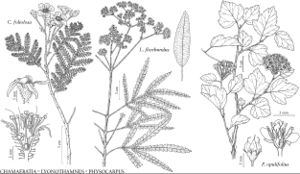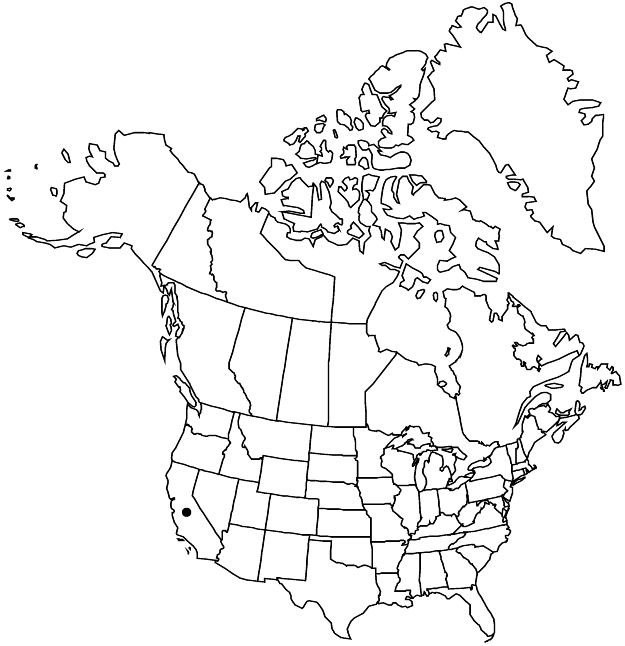Difference between revisions of "Chamaebatia foliolosa"
Pl. Hartw., 308. 1849.
imported>Volume Importer |
imported>Volume Importer |
||
| Line 53: | Line 53: | ||
|publication year=1849 | |publication year=1849 | ||
|special status=Endemic;Illustrated | |special status=Endemic;Illustrated | ||
| − | |source xml=https:// | + | |source xml=https://bitbucket.org/aafc-mbb/fna-data-curation/src/2e0870ddd59836b60bcf96646a41e87ea5a5943a/coarse_grained_fna_xml/V9/V9_564.xml |
|subfamily=Rosaceae subfam. Dryadoideae | |subfamily=Rosaceae subfam. Dryadoideae | ||
|tribe=Rosaceae tribe Dryadeae | |tribe=Rosaceae tribe Dryadeae | ||
Latest revision as of 23:57, 5 November 2020
Plants 1–5(–7) dm, forming extensive colonies. Stems: internodes 5–10(–15) mm; bark reddish brown. Leaves 3-pinnately compound; petiole 10(–15) mm; blade obovate to obtrullate, (28–)45–70(–94) × (13–)20–45(–71) mm, surfaces moderately hirtellous, sparsely stipitate-glandular; rachises straight; pinnae (8–)10–12 per side, oblong to oblong-obovate, (3–)10–25(–40) × (1.8–)3–8(–13) mm; pinnules (4–)7–10 per side, oblong, (1.2–)2.5–5(–10) × (0.6–)1.5–3(–5) mm, each pinnately divided into (3–)5–11 pairs of segments, segments oblong-obovate to obovate, (0.3–)0.6–1.5 × (0.2–)0.5–1 mm, terminal largest, each with terminal short-stipitate gland, adaxial rachis and rachilla with additional segments between pinnae and pinnules. Inflorescences (3–)5–7(–10)-flowered, panicles, 35–60(–80) mm; peduncles 2–5 mm. Flowers: hypanthium 4–6 mm; hypanthia and sepals pubescent, stipitate glands 0.8–1.5 mm; sepals oblong-lanceolate, 4.5–6(–7) mm, apex acute; petals 6–9 mm; stamens 55–65(–76); styles 5.5 mm. Achenes 4.5–5.5 mm. 2n = 18.
Phenology: Flowering Apr–Jun.
Habitat: Slopes, flats, coarse sands, yellow pine to montane conifer forests
Elevation: (300–)600–1800(–2300) m
Discussion
Chamaebatia foliolosa occurs on the western slope of the Sierra Nevada and into the Cascade Range, from Shasta to Inyo and Kern counties.
Selected References
None.

